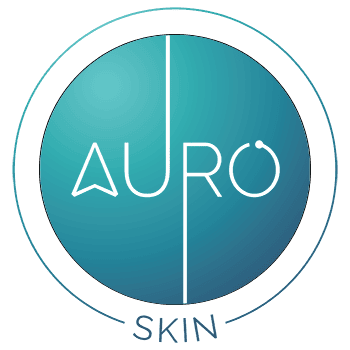November 25, 2025
Rosacea is a common, chronic skin condition that mainly affects the face, leading to facial inflammation and noticeable skin sensitivity. It often appears on the cheeks, nose, chin, and forehead and may be mistaken for acne, skin irritation, or sun sensitivity. Although the exact cause of rosacea is not fully understood, both genetic and environmental factors play a role. The condition tends to flare up periodically and, if untreated, may become more persistent over time. Early diagnosis and proper care can help manage symptoms effectively and improve comfort for patients living with rosacea.
A] What Is Rosacea?
Rosacea is a chronic inflammatory skin condition that typically affects the central face, including the cheeks, nose, chin, and forehead. It causes redness, visible blood vessels, and sometimes pustules resembling acne.
The condition most often affects adults with lighter skin tones between 30 and 50 years of age. Women are more likely to develop rosacea, though men often experience more severe forms with skin thickening, especially around the nose.
Rosacea is not contagious or infectious. However, flare-ups and visible symptoms can impact a patient’s comfort and confidence in social or professional settings. While there is no permanent cure, consistent medical treatment and lifestyle modifications can significantly reduce flare-ups and improve skin health over time.
If you’re interested in understanding more about other chronic skin conditions, explore our blog on understanding psoriasis and its most effective treatments.
B] What Are the Causes of Rosacea?
The exact cause remains unclear but may involve a combination of genetic, immune, and vascular factors.
- Family history can increase risk, suggesting a genetic component.
- Overreaction of the immune system may contribute to inflammation and visible redness.
- Abnormalities in facial blood vessels can lead to persistent flushing or visible veins.
Common triggers include:
- Sun exposure or temperature extremes
- Hot beverages and spicy foods
- Alcohol consumption
- Emotional stress or physical exertion
- Certain medications or skincare products
A possible link has also been suggested between rosacea and microscopic Demodex mites on facial skin or underlying gut health imbalances.
C] What Are the Common Symptoms of Rosacea?
Recognising symptoms early helps prevent progression and guides more effective treatment options. Some of the symptoms are:
- Frequent or long-lasting facial flushing
- Persistent redness on the central face
- Small, red bumps or pus-filled pustules
- Visible fine blood vessels (telangiectasia)
- Thickening of the skin, particularly on the nose (rhinophyma, in advanced cases)
- Burning or stinging sensations in affected areas
- Eye involvement (ocular rosacea): redness, dryness, irritation, and a feeling of grittiness
- Symptom flare-ups triggered by heat, stress, or sun exposure
Rosacea vs. Acne: Key Differences
| Feature | Rosacea | Acne |
| Redness/Flushing | Persistent facial redness, often with visible blood vessels. | Usually not present; redness limited to inflamed pimples. |
| Pimples/Bumps | Red bumps or pus-filled pustules; no blackheads. | Includes blackheads, whiteheads, papules, and pustules. |
| Skin Thickening | In advanced cases, skin (esp. nose) becomes thickened (rhinophyma). | Not typical in acne. |
| Location | Central face: cheeks, nose, chin, forehead. | Can occur on the face, chest, back, and shoulders. |
| Eye Involvement | Common (ocular rosacea: red, watery, irritated eyes). | Rarely affects the eyes. |
| Age of Onset | More common in adults (30–50 years). | Common in teenagers and young adults. |
| Triggers | Flare-ups are linked to sun, spicy food, alcohol, stress, and hot weather. | Usually linked to hormonal changes, oily skin, and clogged pores. |
D] How Is Rosacea Diagnosed?
There is no single test for rosacea. Diagnosis is made by a dermatologist based on the patient’s medical history, reported symptoms, and physical examination. The specialist will assess facial redness, bumps, eye involvement, and triggers. Conditions like acne, lupus, and eczema may need to be ruled out. Accurate diagnosis helps determine the most suitable treatment plan and reduce long-term skin inflammation.
E] What Are the Treatment Options for Rosacea?
- Lifestyle and Trigger Management:
- Use sun protection daily.
- Avoid known triggers such as alcohol, hot drinks, and extremes of temperature.
- Manage stress through relaxation practices.
- Identify foods that worsen symptoms and adjust diet accordingly.
- Topical Medications: Doctors may prescribe metronidazole, azelaic acid, or ivermectin to reduce redness and inflammation. A skincare specialist in Mumbai can guide you on the right treatment combination for your specific rosacea symptoms.
- Oral Medications: Certain antibiotics help reduce inflammation, especially during moderate to severe flare-ups.
- Laser and Light-Based Therapy: Helps reduce facial redness and visible blood vessels.
- Gentle Skincare:
1. Use mild cleansers and avoid harsh scrubs or alcohol-based products.
2. Moisturise regularly to support the skin barrier.
Rosacea does not have a permanent cure, but consistent medical care and appropriate skin management can effectively control symptoms and improve comfort. For expert skin treatment in Mumbai, consult a qualified dermatologist to find the best solution for your skin type.
Conclusion
Rosacea is a long-term condition, but with timely diagnosis, proper care, and consistent management, symptoms can be significantly reduced. Identifying triggers, following a doctor-recommended skincare routine, and using prescribed treatments can help keep flare-ups under control. Every patient’s experience with rosacea is unique, so medical guidance is essential for effective results. If you notice persistent facial redness, visible veins, or irritation, book an appointment with Auro Skin Clinic for a personalised treatment plan, and begin your journey toward smoother, clearer, and more confident skin.

